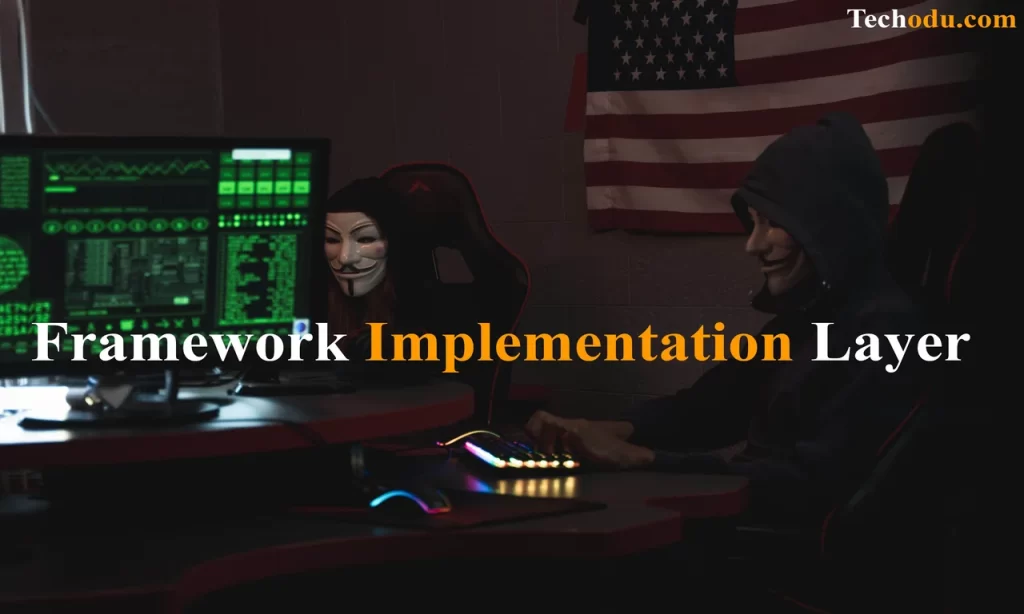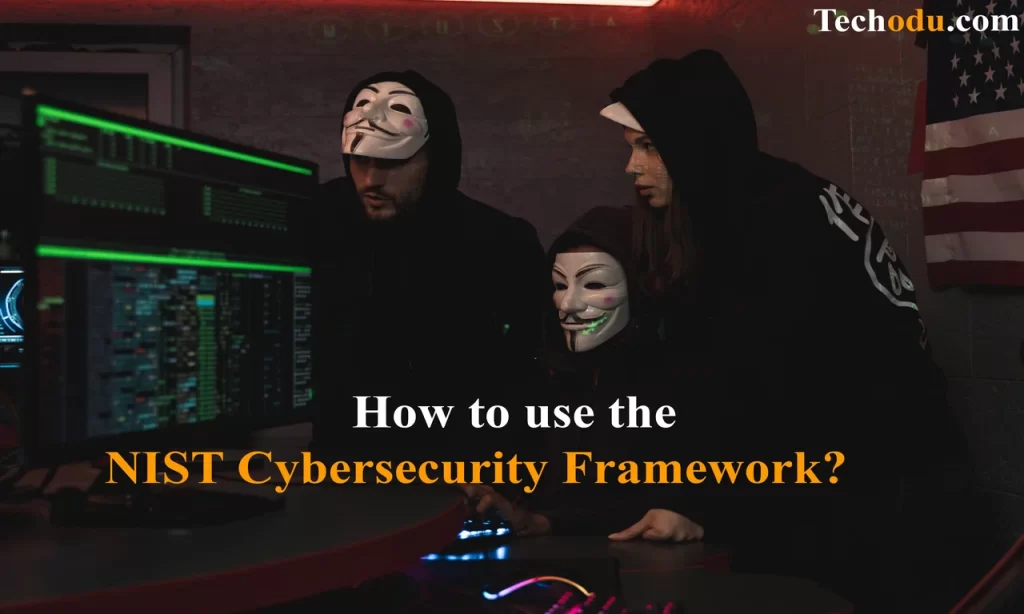NIST Cybersecurity Framework: NIST is an acronym for the National Institute of Standards and Technology, a government agency specializing in cybersecurity risk management.
Storing information online has become the norm. More organizations are pulling this segment to stay relevant in this connected age.
Leaving systems that store sensitive information insecure is a recipe for disaster, especially in the presence of cybercriminals.
Every bit of information kept online requires adequate network security, and employing a proven and tested framework is an effective way to keep attackers at arm’s length.
Many users use the NIST framework when seeking to improve online security. But what is it? Let’s find out.
What does NIST stand for in cybersecurity?
NIST is an acronym for National Institute of Standards and Technology, a government agency specializing in cybersecurity risk management.
The lack of cybersecurity risk management standards in the past has created vulnerabilities in an organization’s security systems, which cyber attackers can exploit to conduct attacks.
Despite recognizing the need for cybersecurity risk management, some organizations lack the expertise to implement it and thus fall victim to cyberattacks.
The NIST cybersecurity framework spans different domains. Organizations in different industries can strengthen their security systems by implementing the framework using intrusion detection systems and other practices.
The NIST framework consists of three components: the core, the implementation layer, and the configuration file. Each component assesses the impact of cybersecurity risk management on business operations and financial goals.
NIST Framework Core
The core of the NIST Framework embodies a set of activities and guidance that organizations can use to manage cybersecurity risk.
Practicality is the focus at the core of the framework. It outlines practical activities that organizations can implement to achieve specific results. Given its practical approach, the component cites real-world examples of organizations that have adopted the outlined practices to manage their cybersecurity risks.
The framework core has five functions:
1. Identification
To effectively manage cybersecurity risk, so you need to understand your critical systems and assets.
While all of your assets may be important to your organization, some assets are more valuable than others. The core framework enables you to prioritize risk management efforts. Faced with an attack, you prioritize your most valuable assets before others.
Identifying functions include business environment, asset management, risk management and governance.
2. Protection
This feature helps simplify your network security efforts by proactively preventing threats from entering your network.
Instead of rushing into a cybersecurity attack, you have defenses on the ground against possible attacks.
Protection features include awareness and training, access control, and data security.
3. Detection
Identifying your most valuable assets and defending against threats is a good start, but it’s not enough to prevent attacks. This feature helps you develop a strategy to detect possible threats early, before they escalate.
Detection capabilities include continuous monitoring, anomalies and events, and detection processes.
4. Respond
What do you do when you detect a cybersecurity threat? This feature will guide you in developing effective strategies to help you nip threats in the bud. Failure to respond effectively could result in serious damage.
Response functions include planning, communication, mitigation, and improvement.
5. Recovery
Even if you can manage cybersecurity risks effectively, your systems may not be exactly what they were before the threat or attack. You need to restore it to its original state through a series of activities and take steps to prevent it from happening again.
Recovery features include planning, communication, and improvement.
Framework implementation layer

Larger organizations may be exposed to advanced security risks compared to smaller organizations. The framework is designed to give organizations the flexibility to implement cybersecurity risk management within their capabilities.
From Layer 1 to Layer 4, the Implementation Layer framework allows you to move at your own pace and at your own pace to manage your assets and costs.
Layer 1: Parts
As the name suggests, Layer 1 is part of the approach to cybersecurity risk management. Instead of formalizing the entire security framework and being proactive in advance, you react by taking action only when security risks arise.
Cybersecurity awareness is limited at this level, and due to the lack of established processes, communication within your organization is not necessarily the best.
Layer 2: Risk Communication
This is where you start formalizing cybersecurity risk management. Your management team recognizes the need for a risk management framework and increases awareness of it across the organization. You equip your employees with the tools to perform cybersecurity activities, but don’t have a structure for sharing information or collaborating with external sources.
Layer 3: Repeatable
At this level, your network security management is advanced. There is a formal framework for risk management and cybersecurity practices. You prioritize cybersecurity management and update it regularly based on your business environment and needs.
Your organization is highly cybersecurity aware and your employees are very knowledgeable about cybersecurity practices. Your organization also has a process for communicating and collaborating with external sources.
Layer 4: Adaptability
This is the peak of cybersecurity risk management. At this level, you have mastered the art of learning from past security incidents and using those lessons to strengthen your current security systems and make future predictions.
Your organization thrives in a healthy cybersecurity culture where employees are highly skilled in cybersecurity activities. It places great emphasis on sharing information with the outside world and has made positive progress in collaboration with external sources.
Framework configuration file
Framework profiles help you strike a balance between business needs, resources, and the ability to manage cybersecurity risk.
After profiling your organization, you will have a solid understanding of adopting the best cybersecurity risk management practices for your business.
With a clear understanding of your business strengths and weaknesses, you can create processes to leverage your strengths and address your weaknesses.
How to use the NIST Cybersecurity Framework?

Are you considering abandoning your current cybersecurity framework for the NIST framework? Not so fast. The framework encourages organizations to consider their current cybersecurity posture before taking action.
1. Review current cybersecurity practices
A good start to using the NIST framework is to review your current cybersecurity practices.
When you conduct a proper review, you will identify existing vulnerabilities in your risk management practices and implement the various activities recommended by the framework to remediate them.
2. Develop or improve cybersecurity practices
After reviewing your current cybersecurity practices, so you can choose to improve them or develop new ones based on the results of the review.
Visit for: Gaming Phone Specs
You need to outline your business goals and create an effective cybersecurity environment to achieve your goals. If your existing practices are not aligned with your goals, you need to create new ones. you can work on improving them.
3. Communicate cybersecurity expectations with stakeholders
Sharing your cybersecurity information with stakeholders allows you to better protect your assets.
By viewing the current state of cybersecurity, you can better understand where you stand. Going forward, you can leverage the solutions provided by the NIST Cybersecurity Framework to forecast and communicate your expectations effectively with stakeholders and external agencies.
Better cybersecurity opportunities for your organization
The NIST framework has different aspects that can seem complex to implement for many organizations.
When implemented effectively, the framework helps you create an efficient cybersecurity framework for your business. You can identify your most important assets, measure your risk management capabilities, identify vulnerabilities and take necessary actions to enhance your cybersecurity. Ultimately, your cybersecurity risk management will get better.
